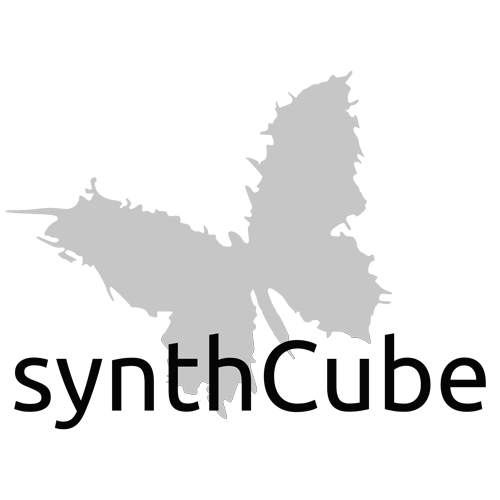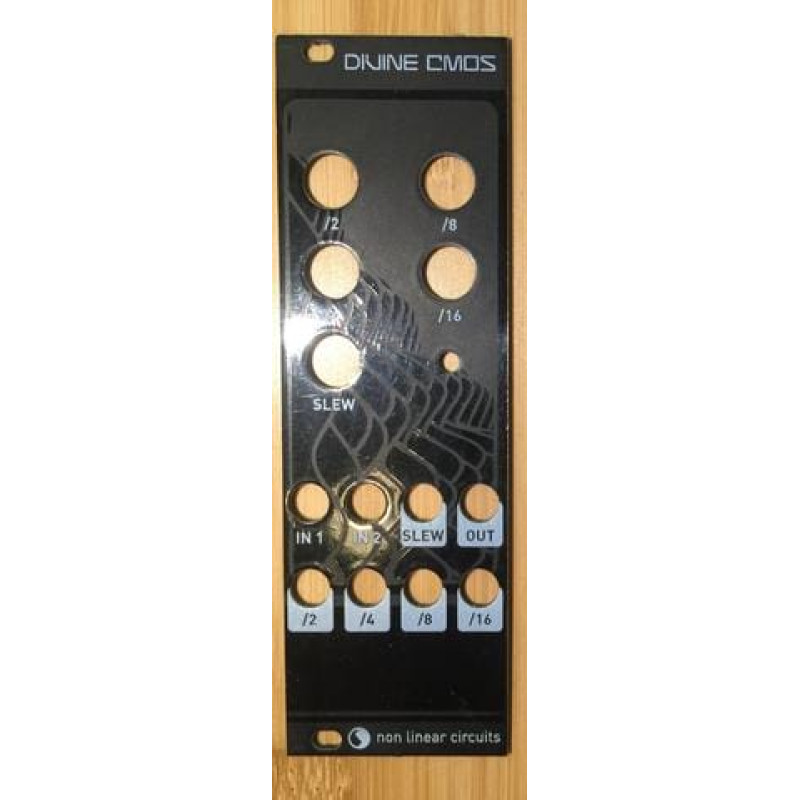NLC1022 Divine CMOS (Black Magpie)
NLC1022 Divine CMOS (Black Magpie)
This circuit takes two input signals and divides them down by /2, /4, /8 & /16. It then XORs these divisions (XOR = Exclusive OR). All of these signals can then be mixed to create the output waveform. If this is done at audio rates the output is very thick and full of shifting harmonics. If it is done at LFO rates, the output is a complex pattern that can be used as a CV source. The gates generated by the CMOS logic stages are also available on the panel.
The slew pot and output can be used to obtain a slewed version of the CV signal. At audio rates, this output is pretty much a flat line, but if the audio signal is turned on/off by a VCA (or two VCAs for two audio signals), then the Slew section can be used as an Envelope Follower. It works very nicely.
Using just one input, you can use the module as frequency divider, for either gates or audio rate signals. If 2 incoming clock signals are patched in, you can generate a series of gates that are related to the original clock signals but are different, very useful for complex percussion patches.
To sum up, it is a sub-oscillator, harmonic ring-modulator, envelope follower, clock divider and gate and CV pattern generator….with slew.
The best effect at audio rates is to get signals from 2 VCOs that are beating – running at almost the same frequency…but not quite. This gives a continuously shifting and active sound. As the input signals are divided down to /16, it is best to run the VCOs at higher frequencies than usual to be able to exploit all the available divisions.
To use as a pattern generator, connect two gate/trigger/LFO signals to the inputs (or just one – it will still work, but 2 is more interesting). Connect the output to a VCO and adjust the pots to find patterns that will be somewhat unpredictable but quite fun to use.
Latest docs here.
These kits and assembled modules are offered on demand, click the link to learn more.
| Module Parameters | |
| Format | Eurorack |
| Panel Size | 8hp |


